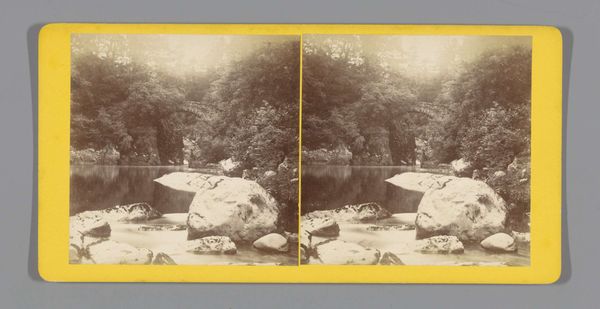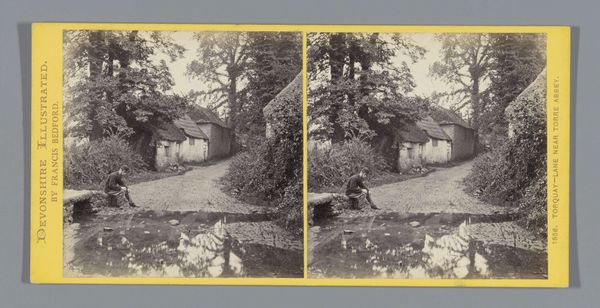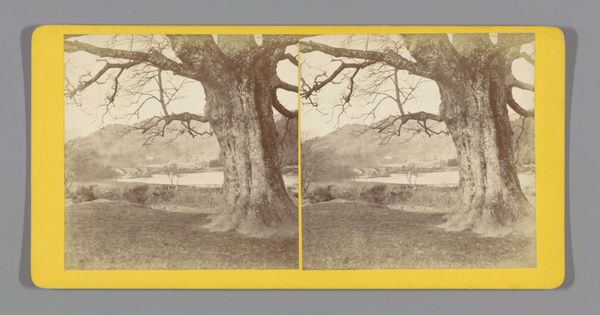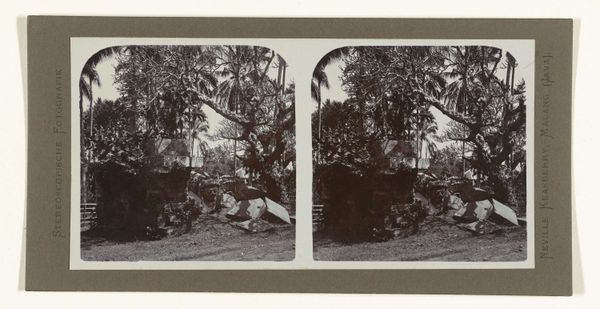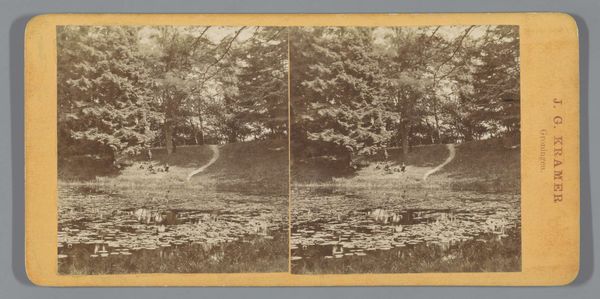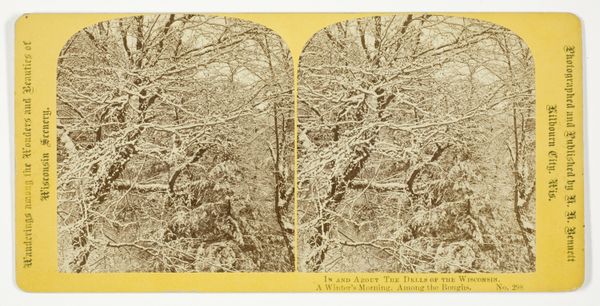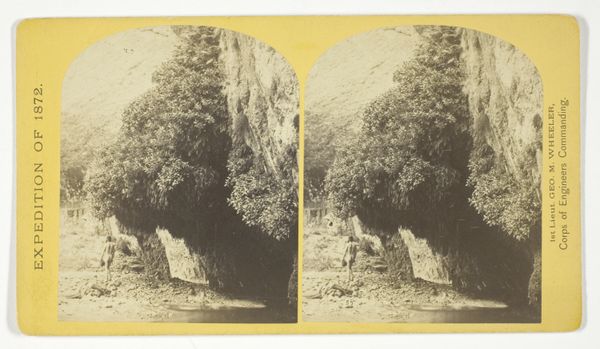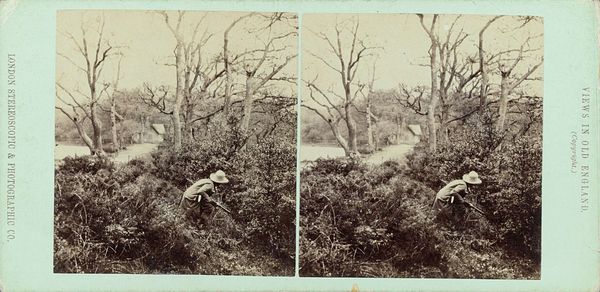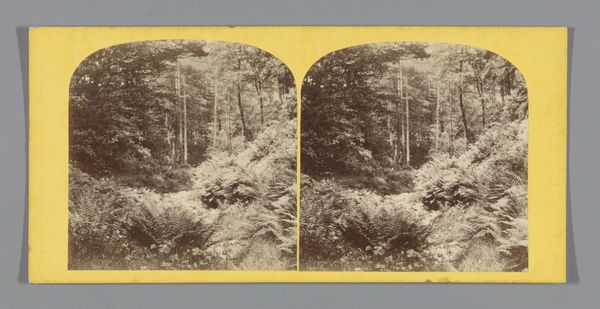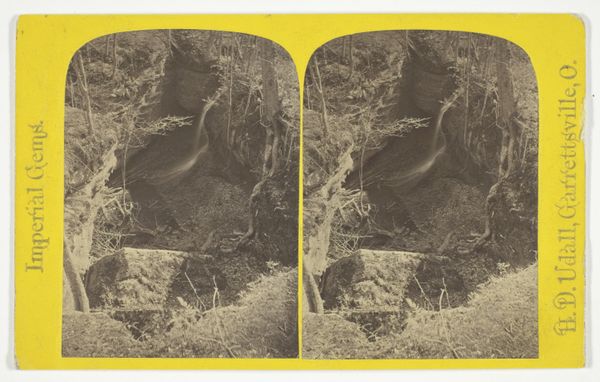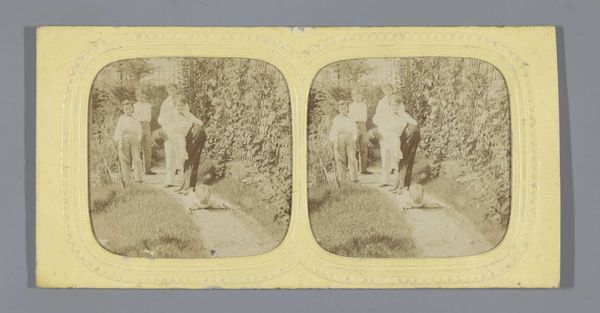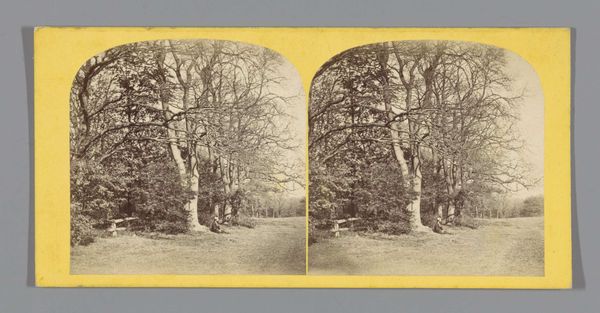
Dimensions: height 85 mm, width 170 mm
Copyright: Rijks Museum: Open Domain
Curator: This gelatin-silver print, "Heuvel in Whiddon Park," was created by Francis Bedford, circa 1850 to 1880. Editor: The monochrome landscape emanates a rather haunting quality, even sepulchral. I mean, these dark looming trees are imposing… It suggests something profound or perhaps something mournful, depending on your reading. Curator: Precisely! Bedford excelled in capturing scenes evoking this sense of sublime, a potent element in Victorian sensibilities and also linked to wider, even Romantic themes. Note the carefully arranged trees framing these scattered rocks on the little hill—this placement would have been full of meaning. Trees signify knowledge and spiritual growth, but rocks? Those represent strength and endurance. Editor: But who was this imagery really for? The Romantics definitely glorified nature as this untamed escape from societal structures. This is further developed and commercialized during the Victorian era, where it almost erases any human, or even socio-economical impact from the story. As picturesque as this place must have been, what was life really like at this time? Whose park even was Whiddon, and for whom was it truly a haven? Curator: A complex point to be sure. What Bedford's work transmits through symbolism is more connected to inner spiritual landscapes and the cultural memory of landscapes held by Victorians, reflecting their yearnings and anxieties. Bedford's meticulous rendering of texture would offer Victorians, saturated with symbolism, ways of contemplating themselves and their places. Editor: Agreed. These romantic landscapes could reflect that yearning. It becomes a question of power though; for those empowered to enjoy and capture beauty, and the role nature played to further support existing infrastructures. So many questions surface around leisure, privilege and the idealized. Curator: Perhaps we're meant to interpret this Whiddon scene through that lens, too, allowing symbols to shape how we engage critically with our history. Editor: Yes. Seeing a seemingly still landscape can reveal an active interplay between culture and identity if you pause to look and question a little more.
Comments
No comments
Be the first to comment and join the conversation on the ultimate creative platform.
